
Although Birmingham in England has existed as a settlement for over a thousand years, today's city is overwhelmingly a product of the 18th, 19th, and 20th centuries, with little surviving from its early history. As it has expanded, it has acquired a variety of architectural styles. Buildings of most modern architectural styles in the United Kingdom are located in Birmingham. In recent years, Birmingham was one of the first cities to exhibit the blobitecture style with the construction of the Selfridges store at the Bullring Shopping Centre.
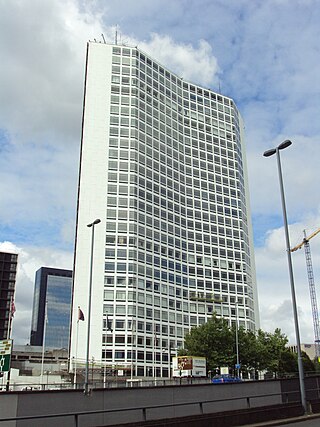
Alpha Tower is a Grade II listed office skyscraper in Birmingham, England. It was designed by the Birmingham-born architect George Marsh of Richard Seifert & Partners as the headquarters of the commercial television company ATV and part of the company's production studio complex known as ATV Centre, an adjacent shorter tower was planned but was never built. ATV closed in 1982, after which the building became offices.
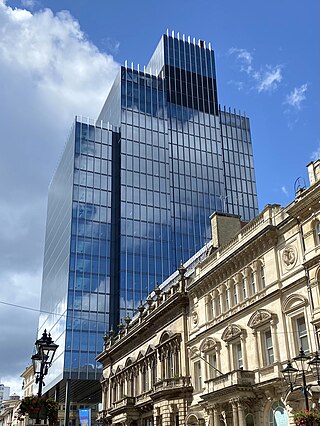
103 Colmore Row is a 108-metre tall, 26-storey commercial office building located on Colmore Row, Birmingham, England. Completed in 2021, this building replaced the former NatWest Tower designed by John Madin and completed in 1975. In 2008, a plan by then owners British Land to demolish Natwest Tower and replace it with a taller modern equivalent was approved. This plan never progressed and in 2015 the building passed to the developer Sterling Property Ventures, who successfully applied to have the building demolished. Construction of the new tower began in June 2019 and completed in 2021.

The Methodist Central Hall, 196–224 Corporation Street, Birmingham, England, is a three-storey red brick and terracotta Grade II* listed building with a distinctive tower at the northern end of Corporation Street. The design complements the Victoria Law Courts opposite, also in terracotta, and includes eclectic details such as the corner turrets resembling Indian chattris. It is located within the Steelhouse Conservation Area.

Baskerville House, previously called the Civic Centre, is a former civic building in Centenary Square, Birmingham, England. After serving as offices for the Birmingham City Council, it was extended with additional floors in 2007.

The Victoria Law Courts is a red brick and terracotta judicial building, which accommodates Birmingham Magistrates' Court, on Corporation Street, Birmingham, England. It is a Grade I listed building.

The Warwick Bar conservation area is a conservation area in Birmingham, England which was home to many canalside factories during the Industrial Revolution of the eighteenth and nineteenth centuries.
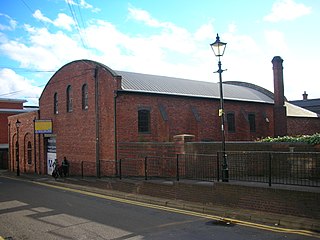
The Gas Retort House at 39 Gas Street, Birmingham, England is the last remaining building of Birmingham's first gas works.

St Francis of Assisi's Church, Bournville is a parish church in the Church of England in Bournville, Birmingham.

The Grand Hotel is a Grade II* listed Victorian five star hotel in the city centre of Birmingham, England. The hotel occupies the greater part of a block bounded by Colmore Row, Church Street, Barwick Street and Livery Street and overlooks St Philip's Cathedral and churchyard. Designed by architect Thomson Plevins, construction began in 1875 and the hotel opened in 1879. Extensions and extensive interior renovations were undertaken by prominent Birmingham architecture firm Martin & Chamberlain from 1890 to 1895. Interior renovations included the building of the Grosvenor Room with Louis XIV style decoration.

St Alban the Martyr, Birmingham is a Grade II* listed Church of England parish church in the Anglican Diocese of Birmingham. It is dedicated to Saint Alban, the first British Christian martyr.
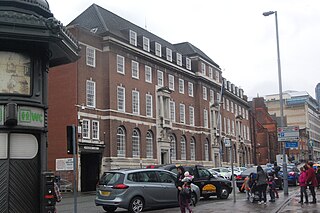
Steelhouse Lane police station is a former police station in central Birmingham, England. It was built for the Birmingham City Police and opened in 1933 as their Central Police Station, replacing a Victorian station on the same site. It was used by their successor, the West Midlands Police, until 2017 where they transferred to Lloyd House, also the force's HQ. The carvings over the entrances, including the coat of arms of Birmingham, are by the local sculptor William Bloye.
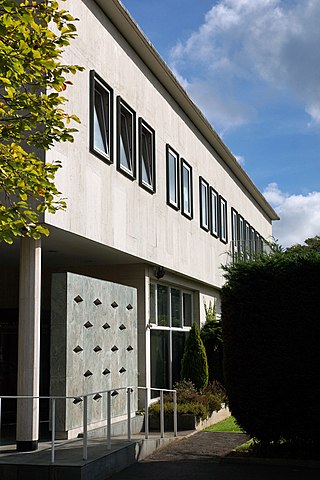
St James’s House is a Grade II listed office building in Birmingham, England.

Moor Pool is a 22.32 hectares garden suburb within the ward of Harborne, Birmingham, England. It was designated a Conservation Area in July 1970, which was raised by an Article 4(2) direction order in 2006. A Conservation Area Character Appraisal and Management Plan was adopted in March 2012.
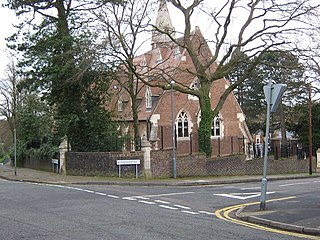
St James is a former parish church in the Church of England in Edgbaston, Birmingham, which was converted into apartments in 2004.
Wray-with-Botton is a civil parish in Lancaster, Lancashire, England. It contains 44 listed buildings that are recorded in the National Heritage List for England. All of the listed buildings are designated at Grade II, the lowest of the three grades, which is applied to "buildings of national importance and special interest". The parish contains the village of Wray, and is otherwise rural containing scattered farms. Apart from a bridge, all the listed buildings are houses, farmhouses, farm buildings, and structures associated with them.
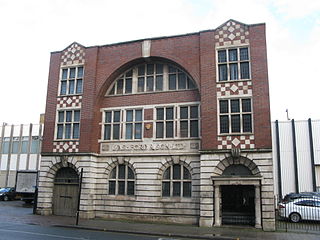
The former Ashford & Sons factory in Birmingham, England is a Grade II* listed building in Arts & Crafts style.
Christopher John David Wray was an English actor and businessman.

















